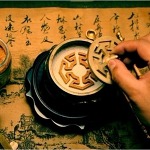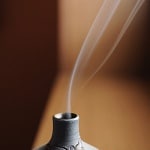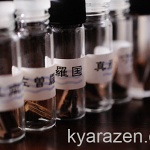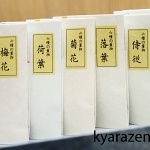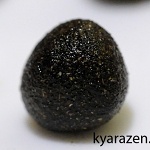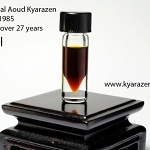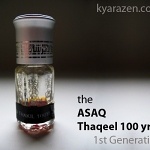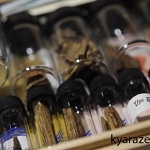Ever tried to burn a scoop or a mound of incense powder (sandalwood, agarwood etc) in a saucer or an incense burner and not have it combust to completion, often smouldering, smelling charred and too smokey? That happens because of the lack of proper access to air for complete combustion of incense powders if… [Read More…]
Incense and fragrance for therapeutic purposes
Both scent and taste are sensed by a family of transmembrane proteins known as G-protein coupled receptors. But sparing you the boring science, I thought that this article could be a good follow up to the Rikkoku post I had last week, where agarwood notes are described as tastes. In principle the best way to… [Read More…]
Perspectives on the Rikkoku Gomi
The Rikkoku Gomi set was first assembled around the 15th Century with the establishment of a formalized “way/art” of the Incense by founder Sanjonishi Sanetaka (1455-1537 AD), a noble under the Muromachi Shogunate of Shogun Ashikaga Yoshimasa. Without the benefits of modern logistics, and being more isolated from the rest of the world, agarwood import… [Read More…]
Mukasa-no-Takimono – The Six Kneaded Incenses of the Hei-an Period
Kneaded incense was thought to be brought into Japan by Buddhist Monk, Gan-Jin around 750 AD. From its introduction in the midst of the Nara Period (710 AD to 794 AD) to the Hei-an Period (794-1185), kneaded incense gained immense popularity and it was the norm for the rich and noble to take part… [Read More…]
Making Kneaded Incense Balls – Neri-Koh
The art of making kneaded incense balls dates back over a thousand years ago during the Chinese Tang Dynasty and the corresponding Hei-an period in Japan. Prior to usage in incense culture, honeyed pills (练丹) made from combining medicinal herbs with honey, and sealing off with wax, was a common practice in Chinese medicine. The… [Read More…]
Philosophies of the Way of Incense
The philosophies and ideals of the way of incense is very seldom talked about in online media (perhaps also due to the lack of translations?). Most of what is being said about the Way of Incense (ko-do) is generally process orientated, on how to heat wood chips, make incense trails, kneaded incense balls (which has… [Read More…]
Kyarazen Oud 1985
Having received many enquiries on the identity of that mysterious drop of oil that I always sent out in packages, i.e. together in the package of the a few lucky purchasers of the Subitism heater, I thought I would push forward this write up, which was scheduled to a very much later date as it… [Read More…]
Comparing Jinkoh and Kyara
A summary of the comparisons between normal aloeswood and kyara/kynam in a table. Enjoy!
Little Vials of Joy – the ASAQ Thaqeel
I bet my website administrator is frowning at me right now. “Short titles to articles! The shorter the better! Clearer!” – she always exclaims at me, whilst frustratedly looking at my bad habit of having overly descriptive titles. But for this article I couldn’t help having an aptly descriptive title- little vials of joy. These… [Read More…]
How to store Kyara and fragrant woods
Kyara, being an extremely refined and rare fragrant wood material, should be protected from extremes and fluctuations in both humidity and temperature, dampness, light, and all other contaminating smells, including incense, perfumes, sandalwoods etc. It must be kept in an extremely clean and pure environment to preserve all its qualities and prevent damage or loss… [Read More…]
- « Previous Page
- 1
- …
- 7
- 8
- 9
- 10
- Next Page »
